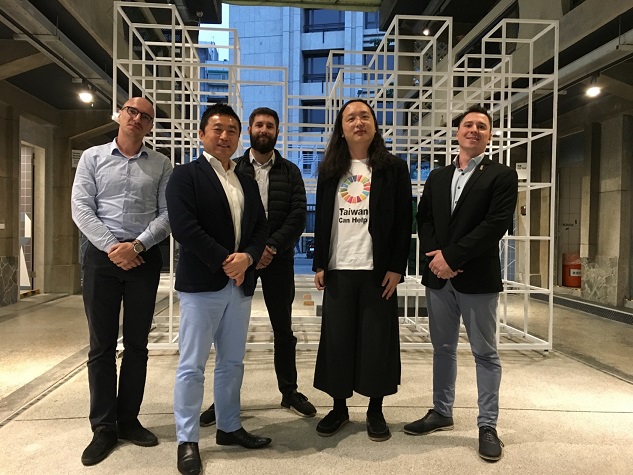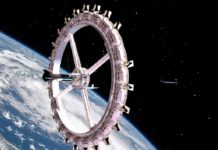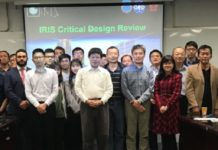
Odysseus Space is a NewSpace company founded in Taiwan in 2016, by three French engineers. In 2018, Odysseus opened a second office in Luxembourg, after winning the Luxembourg Space Agency’s SpaceResources.lu challenge. The company is now developing technologies for the NewSpace market, in additional to consulting and reselling satellite imagery from Japanese company Axelspace. In the long-term, Odysseus hopes to come up with new technologies to cater to an in-space resource utilisation industry.
We spoke with Julien Hennequin, Chief Operating Officer & Taiwan Branch Director of Odysseus Space on the technologies they’re working on, and their activities in Taiwan.
What made you open an office in Taiwan? Could you tell us more about Taiwan’s space industry and your involvement in it?
Taiwan is an excellent choice to develop space technologies in Asia. We are actually in the country which is providing most of the world with the latest innovation in electronics. When you think about it, there are smaller and smaller differences between a flying satellite and a laptop, or a cell phone. The only exception is that for satellites we rely on outdated technologies, for the simple reason that we are afraid of change in the space Industry. This is obviously changing with the New Space movement. With all the CubeSats and nanosatellites which have already been launched for the past years, we can now see that some non space grade components have actually very good performance in Space, for a fraction of the cost.
It is also a country with more than 30 years of experience with space activities, thanks to the Formosat program from Taiwan’s space agency, NSPO. We are actually providing services to them from time to time. We are currently helping them to launch one of the CubeSats they are sponsoring, YUSAT-1, and we have just finalized a consultancy contract for a project to the Moon. We can’t say more!
Could you tell us about the technologies you’ve developed?
CYCLOPS is our laser communication development project. There is a currently a clear need for higher data rate communications, but it is starting to be very crowded up there, which creates a lot of interference with traditional RF systems. At the same time, other communication technologies on Earth (5G etc.) are also requiring a lot of spectrum resources and competing with space activities. As we see it, the only way forward is to shift to a completely different part of the electromagnetic spectrum: light. It would offer much faster, secure communications, without interference.
Nevertheless this comes with some challenges, especially in pointing. Just imagine pointing accurately a laser between two satellites which are moving at high velocity, hundreds of kilometers apart. That’s what we are currently solving, and we hope to come up with a product which is performant while being affordable enough for all the new space players in the coming years. This has already been proven on very large, very complex satellites. We would like to democratize this technology.
ASTRAEUS is a new project we are preparing in Luxembourg. If everything goes as planned we should kick it off this summer. We would like to improve the navigation of satellites by giving them the ability to trace and correct their own course. Currently, to go from a point A from point B, everybody is using GPS. And autonomous cars or planes are also using technology. But when you are out there, if you want to go to the Moon or beyond, you can only rely on the stars and on what you can see. So that’s what we are working on: a technology which would give the ability to satellites to know where they are and how they can correct their trajectory by just looking at the celestial bodies around them. Instead of correcting them manually by keeping a communication link with them, they would automatically do so. This is the first brick in some automation technologies we would like to develop for satellites. There is still a long way to go to reach the level of what has been achieved in this field for cars or aircraft, but this is definitely the way forward and there is a huge margin for improvement ahead, with lot of future applications it could serve (Space Resources Utilisation, In Space Manufacturing, In Space Servicing, Debris Removal etc.)
ARGO is a technology that we started in Taiwan. We had the opportunity to investigate the performance of a pulse plasma propulsion system being developed at National Cheng Kung University (NCKU) in Tainan, and we really wanted to see if it was feasible to make it into a viable product. We therefore developed a first prototype, which gave very satisfying performance, especially in term of attitude correction. That’s something we would like still to develop in the future but our focus has shifted toward laser communications and automation technologies which we think have better market potential at the moment.
Recently, you signed an agreement with Momentus for an NCKU satelite, IRIS-A. Could you tell us more about IRIS-A, and what your role in this project is?
IRIS (Intelligent Remote-Sensing and Internet Satellite) is a satellite program developed at NCKU, aiming at demonstrating technologies related to Earth Observation and the Internet of Things, two group of technologies which are of significant importance for Taiwan.
The first of these satellites, IRIS-A, will be equipped with an Internet of Things (IoTs) payload to achieve a Doppler shift estimation and improve the quality of downlink signals, increasing the efficiency of the so called “IoT constellation” solutions that are planning to monitor IoT objects from Space. We are supporting NCKU with the technical discussions with Momentus.
What are your plans for Odysseus in the next few years?
We would like to create real bridges between Asia and Europe on space activities. Currently we have projects in both regions but we think that there is everything to be gained by having transversal projects, with very good synergies in term of R&D and manufacturing capabilities. This nevertheless requires the right resources and frameworks. That’s something we are focusing on at the moment.
We will also be very busy developing our CYCLOPS and ASTRAEUS products while supporting our Asian customers but we really would like to develop more of these key technologies. Our aim is to transform technology into real products which could really support the development of completely new business ideas, especially in an in-space resource utilisation industry. That’s our long term goal and we think it can only be done step by step.
How do you think the Asian space industry will develop in the coming years?
As a European, I am always in favor of intra-regional cooperation. And I think that this is something which is lacking in Asia, even though initiatives like the Asia-Pacific Regional Space Agency Forum (APRSAF) should be saluted. It is nevertheless becoming one of the largest markets in the world for space applications. I hope that the level of investment from this region in space companies can match the opportunities of this market, so that Asia can also become one of the largest providers of space services in the world.






